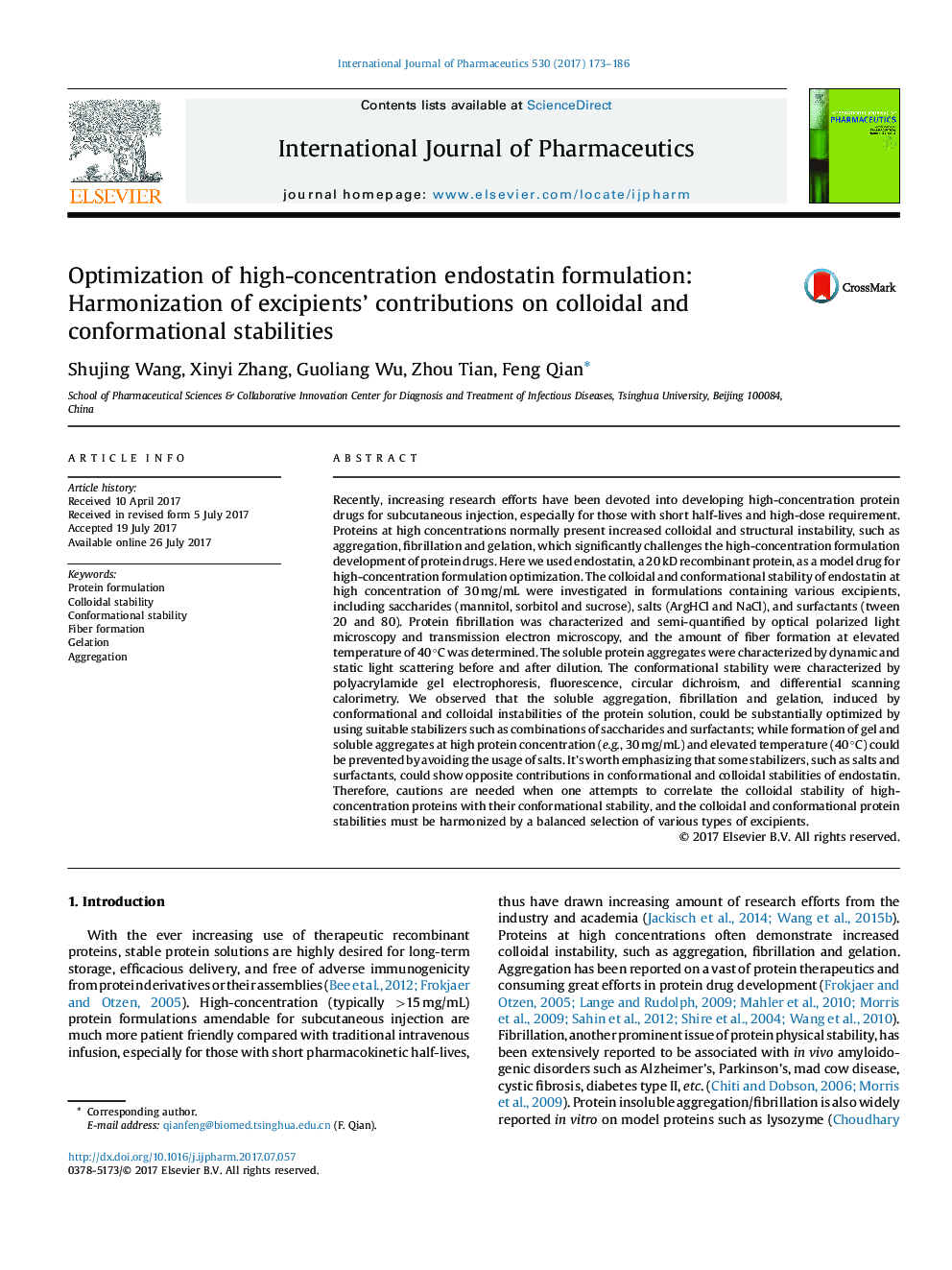| Article ID | Journal | Published Year | Pages | File Type |
|---|---|---|---|---|
| 5550114 | International Journal of Pharmaceutics | 2017 | 14 Pages |
Recently, increasing research efforts have been devoted into developing high-concentration protein drugs for subcutaneous injection, especially for those with short half-lives and high-dose requirement. Proteins at high concentrations normally present increased colloidal and structural instability, such as aggregation, fibrillation and gelation, which significantly challenges the high-concentration formulation development of protein drugs. Here we used endostatin, a 20 kD recombinant protein, as a model drug for high-concentration formulation optimization. The colloidal and conformational stability of endostatin at high concentration of 30 mg/mL were investigated in formulations containing various excipients, including saccharides (mannitol, sorbitol and sucrose), salts (ArgHCl and NaCl), and surfactants (tween 20 and 80). Protein fibrillation was characterized and semi-quantified by optical polarized light microscopy and transmission electron microscopy, and the amount of fiber formation at elevated temperature of 40 °C was determined. The soluble protein aggregates were characterized by dynamic and static light scattering before and after dilution. The conformational stability were characterized by polyacrylamide gel electrophoresis, fluorescence, circular dichroism, and differential scanning calorimetry. We observed that the soluble aggregation, fibrillation and gelation, induced by conformational and colloidal instabilities of the protein solution, could be substantially optimized by using suitable stabilizers such as combinations of saccharides and surfactants; while formation of gel and soluble aggregates at high protein concentration (e.g., 30 mg/mL) and elevated temperature (40 °C) could be prevented by avoiding the usage of salts. It's worth emphasizing that some stabilizers, such as salts and surfactants, could show opposite contributions in conformational and colloidal stabilities of endostatin. Therefore, cautions are needed when one attempts to correlate the colloidal stability of high-concentration proteins with their conformational stability, and the colloidal and conformational protein stabilities must be harmonized by a balanced selection of various types of excipients.
Graphical abstractDownload high-res image (176KB)Download full-size image
